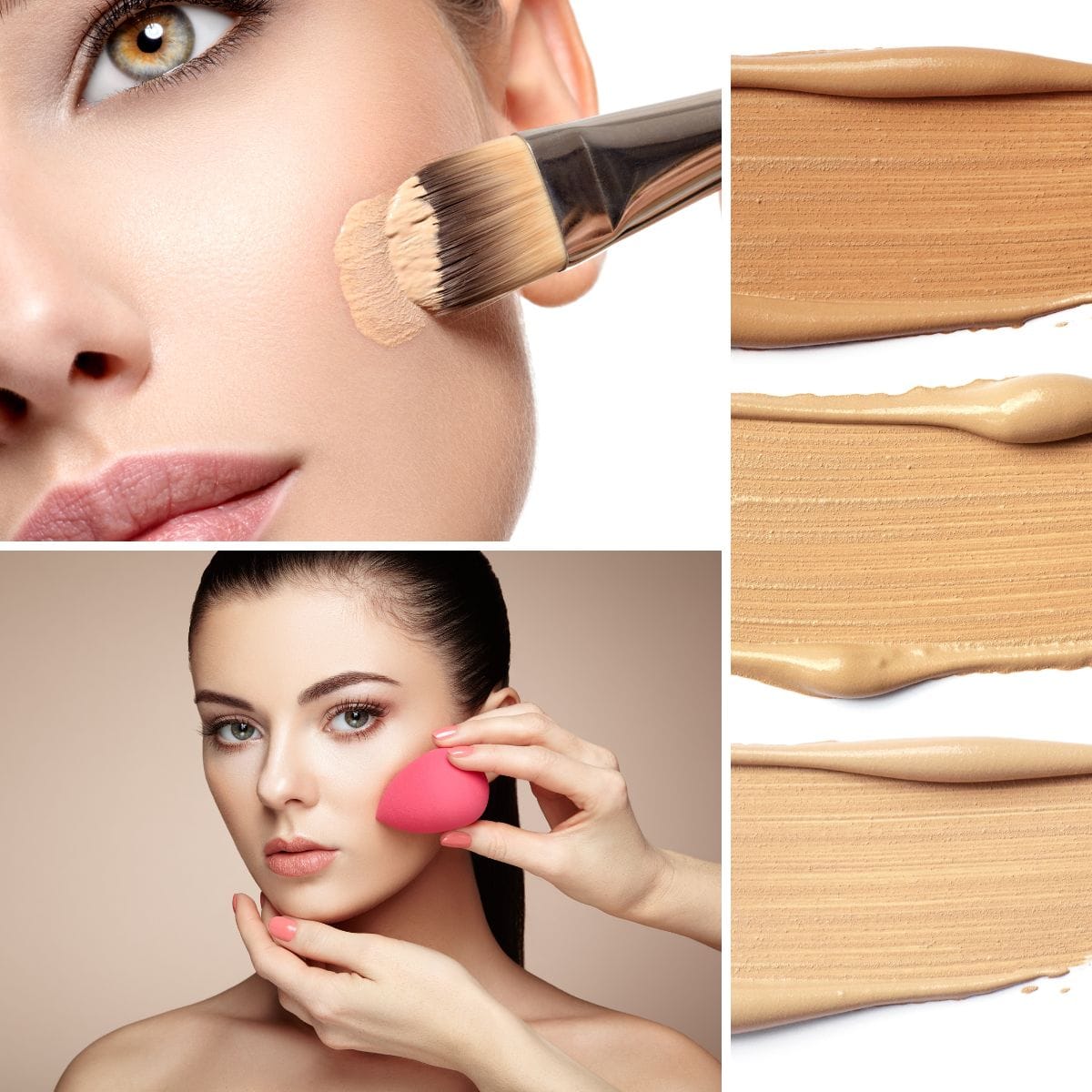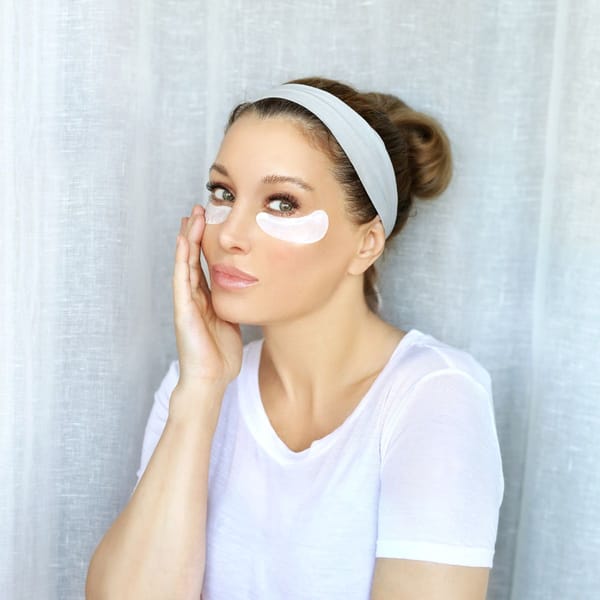When it comes to applying foundation, the age-old debate of brush versus sponge continues to spark conversations among makeup enthusiasts. Each tool has its own set of advantages and disadvantages, and the choice often boils down to personal preference and the desired finish. In this article, we'll delve into the pros and cons of using a brush or sponge for foundation, helping you make an informed decision for your makeup routine.
Key Takeaways:
- Brushes offer more control and fuller coverage.
- Sponges provide a seamless blend and natural finish.
- Personal preference and skin type play a significant role in choosing the right tool.
The Foundation Brush: Precision and Coverage
Advantages of Using a Foundation Brush
Using a foundation brush can be a game-changer for those seeking more control and fuller coverage. Makeup brushes, especially those with dense bristles, allow for a concentrated application of foundation. This means you can build coverage in areas that need it most, achieving a flawless finish. Brushes are particularly effective for applying liquid foundation, as they can buff the product into the skin, creating an even layer without streaks.
Another advantage of using a foundation brush is the ability to reach tricky areas around the nose and eyes. The pointed tip of some brushes allows for precise application, ensuring that every part of your face is covered. Additionally, brushes tend to absorb less product compared to sponges, meaning you use less foundation overall.
Disadvantages of Using a Foundation Brush
However, using a foundation brush isn't without its drawbacks. One common issue is the potential for streaks if the brush isn't used correctly. To avoid this, it's essential to use a buffing motion rather than dragging the brush across the skin. Another downside is that brushes require regular cleaning to prevent the buildup of bacteria, which can lead to breakouts, especially for those with sensitive skin.
Moreover, some people find that brushes can be too harsh on their skin, causing irritation. This is particularly true for individuals with dry skin, as the bristles can exacerbate flakiness. Despite these challenges, many makeup artists swear by brushes for their ability to provide a flawless application and fuller coverage.
The Makeup Sponge: Seamless Blend and Natural Finish
Advantages of Using a Makeup Sponge
Makeup sponges, such as the popular Beauty Blender, are known for their ability to create a seamless blend and natural finish. When used damp, a makeup sponge can help achieve a dewy, airbrushed look that is difficult to replicate with a brush. The sponge's porous texture allows it to absorb excess product, preventing a cakey appearance and ensuring a sheer coverage.
One of the standout features of makeup sponges is their versatility. They can be used for applying not only foundation but also concealer, blush, and even powder. The pointed tip of a sponge makes it easy to reach small areas around the eyes and nose, while the broader base can be used for larger areas of the face. This makes sponges a valuable tool in any makeup routine.
Disadvantages of Using a Makeup Sponge
Despite their many benefits, makeup sponges also have some downsides. One of the main concerns is that they tend to absorb more product than brushes, which can lead to wastage. This means you might go through your foundation more quickly when using a sponge. Additionally, sponges need to be cleaned frequently to prevent the buildup of bacteria, which can be a hassle for some users.
Another potential issue is that sponges can be less effective for those seeking full coverage. While they excel at creating a natural finish, they may not provide the concentrated application needed for covering blemishes or discoloration. For those who prefer a more polished look, a brush might be a better option.
Personal Preference: Finding What Works for You
Experimenting with Different Tools
Ultimately, the choice between a brush and a sponge comes down to personal preference and the specific needs of your skin. It's worth exploring both options to see which one works best for you. Some people find that they prefer using a brush for certain types of foundation, such as liquid or cream products, while others swear by sponges for their ability to blend seamlessly.
Experimenting with different tools can also help you discover new techniques for applying foundation. For example, you might find that using a damp beauty blender gives you a more natural finish, while a brush provides the fuller coverage you need for special occasions. Don't be afraid to mix and match tools to achieve your desired look.
Considering Your Skin Type
Your skin type can also play a significant role in determining the best tool for applying foundation. For example, those with dry skin might find that a sponge provides a more hydrating application, while individuals with oily skin might prefer the control and precision of a brush. Sensitive skin types should be cautious with brushes, as the bristles can sometimes cause irritation.
It's also important to consider the type of foundation you're using. Liquid foundations tend to work well with both brushes and sponges, while powder foundations are typically better suited for brushes. Cream foundations can be applied with either tool, depending on the desired finish.
Achieving a Flawless Finish: Tips and Tricks
Using a Brush for Flawless Application
To achieve a flawless finish with a foundation brush, start by applying a small amount of foundation to the back of your hand. Dip the brush into the product and use a stippling or buffing motion to apply it to your face. Focus on blending the foundation into your skin, paying special attention to areas that need more coverage.
For a more natural look, use a light hand and build coverage gradually. If you notice any streaks, use a clean brush or a damp beauty blender to blend them out. Remember to clean your brush regularly to maintain its effectiveness and prevent the buildup of bacteria.
Using a Sponge for Seamless Blend
When using a makeup sponge, start by dampening it with water and squeezing out any excess. This will help the sponge absorb less product and create a more natural finish. Apply a small amount of foundation to the back of your hand and use the sponge to dab the product onto your face.
Use a bouncing or stippling motion to blend the foundation into your skin, focusing on areas that need more coverage. For a dewy finish, use the sponge to apply a light layer of foundation and build coverage as needed. Clean your sponge regularly to prevent the buildup of bacteria and maintain its effectiveness.
The Role of Makeup Artists: Expert Insights
Professional Preferences
Makeup artists often have their own preferences when it comes to applying foundation. Some swear by brushes for their ability to provide a flawless application and fuller coverage, while others prefer sponges for their seamless blend and natural finish. Many professionals use a combination of both tools, depending on the specific needs of their clients and the desired look.
For example, a makeup artist might use a brush to apply foundation to the center of the face, where more coverage is needed, and then use a sponge to blend the product outwards for a more natural finish. This technique allows for a more controlled application and ensures that the foundation looks seamless and even.
Tips from the Pros
One tip from makeup artists is to always start with a small amount of foundation and build coverage gradually. This helps prevent a cakey appearance and ensures that the foundation looks natural. Another tip is to use a damp beauty blender for a dewy finish, as the moisture helps the foundation blend more easily into the skin.
Makeup artists also recommend cleaning your tools regularly to maintain their effectiveness and prevent the buildup of bacteria. This is especially important for those with sensitive skin, as dirty brushes and sponges can cause breakouts and irritation.
Summary
Choosing between a brush and a sponge for applying foundation ultimately comes down to personal preference and the specific needs of your skin. Brushes offer more control and fuller coverage, while sponges provide a seamless blend and natural finish. Experimenting with both tools can help you discover the best method for achieving a flawless complexion. Remember to consider your skin type and the type of foundation you're using, and don't be afraid to mix and match tools to achieve your desired look.
FAQ
Q1: Can I use both a brush and a sponge for applying foundation?
A1: Absolutely! Many makeup artists and enthusiasts use a combination of both tools to achieve their desired finish. For example, you can use a brush for a more controlled application and then blend out any streaks with a damp beauty blender.
Q2: How often should I clean my makeup brushes and sponges?
A2: It's recommended to clean your makeup brushes and sponges at least once a week to prevent the buildup of bacteria. For those with sensitive skin, more frequent cleaning may be necessary to avoid breakouts and irritation.
Q3: Which tool is better for sensitive skin?
A3: Both brushes and sponges can be suitable for sensitive skin, but it's important to choose high-quality tools and clean them regularly. Some individuals with sensitive skin may find that sponges are gentler, while others prefer the control of a soft-bristled brush. Experimenting with both can help you determine which works best for your skin type.







